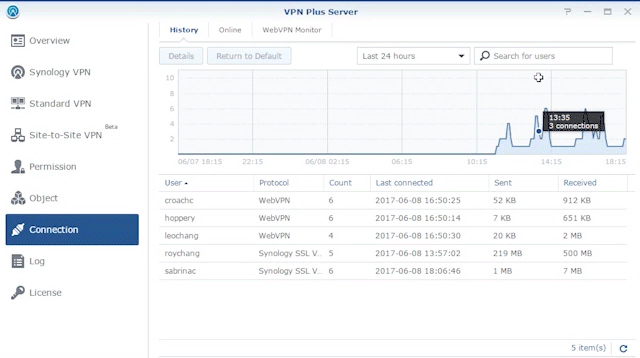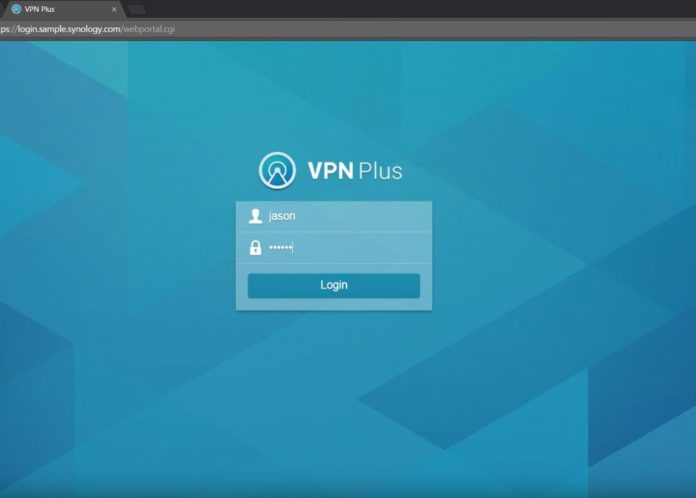



You can also, if you like, setup a CNAME with your own domain and point it to that dynamic domain. NOTE: If you don't want to use your IP address, you can use the dynamic DNS feature built into your Synology, or any one of many dynamic DNS systems that will give you a nice domain like "" or whatever. I selected L2TP and put in my Server name or IP and named the account "home." Setting up iOS/iPhone/IPad for VPNįrom the iOS Settings app, go General | VPN. Here's what I did on my iDevice to setup VPN. If you succeed, you should be able to see yourself in the VPN Server | Connection List area on our Synology. I did this as a quick test by taking my iPhone off the wireless networking (thereby being on the open internet) and VPN'ing back in. I changed this under Security.Īt this point, you should be able to at least try to connect to your house via VPN. It's best to have your Synology use a Static IP address, or at least have a DHCP reservation so this IP doesn't change and things stop lining up.Īlso, ensure that your Router is passing L2TP traffic as well. The Device IP is the internal IP address of your Synology. On my Linksys, it's under Security, Apps and Gaming. Login to your router and in this case of L2TP, forward UDP ports 1701, 500, and 4500. It lets you know exactly what's going on, and it can be less of a "black box." However, there's something to be said for handling things yourself. It supports port forwarding, and the Synology can often talk directly to a router and request open ports. My router is a Linksys WRT1900ac that I like very much. NO need to give VPN access to users who won't use it. Just give the minimum privileges to the user that needs them. You can also setup a hosts file if you want to just hit a few things inside your house. I found this worked best for me when trying to access internal resources. Notice also that I selected my INTERNAL DNS server. Select L2TP (or whatever you want), and Enable it. Benefits are that it's on all major platform, it's generally considered secure, and it's easy to setup. I decided on L2TP, although there is some concern the NSA has weakened it. You should give some though as to which VPN technique you want to use. Setting up a Synology for L2TP VPNįirst, in the Synology Package Manager, ensure that you've got the Synology VPN Server package installed and running. The result is I can now remote into my home and manage things from any device I own.
Synology router vpn plus server windows#
The Synology, my Router, my iOS device, and my Windows PC/Surface. The Synology will act as my VPN server as well. I use it for Plex, it hosts my files and photos, it manages my surveillance cameras and acts as a camera DVR, it runs a Minecraft Server, it's a Git server, it even runs Docker. It's not just a file server, it's an everything server, in my house. I have a a Synology 1511+ NAS appliance and I love it.
Synology router vpn plus server software#
I wanted it to be standards-based and not require any additional software installations. I wanted a VPN solution I could use on my iPhone/iPad and Surface. From GoToMyPc to Hamachi, again, there's dozens of ways. I do very much realize there are a lot of different options to do this, and have been for years. I wanted to be able to VPN into my home and remotely access my machines and files. The kinds of things we can do in our homes as individuals with off-the-shelf hardware would have needed an IT Dept of a dozen just 10 years ago, ya know? Amazing. It's amazing that I can basically be my own IT Department.


 0 kommentar(er)
0 kommentar(er)
